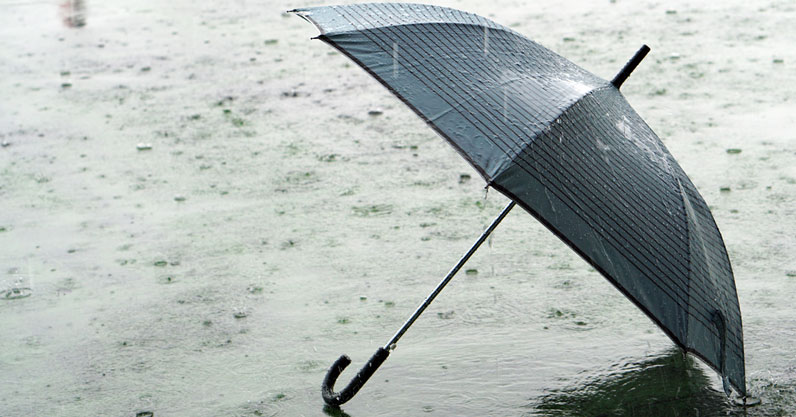LISTED: Typhoons In The Philippines This 2020
3 min read(This article on typhoon names in the Philippines was originally posted on May 12, 2020. Updates were made on May 15, 2020.)
A low-pressure area developing east of Mindanao was upgraded by weather bureau PAGASA into a tropical depression on Sunday. Nicknamed Tropical Depression Ambo, the storm is expected to bring cloudy to rainy weather in the Philippines during the course of the week. It’s the first of the typhoons expected to hit the Philippines this 2020.

According to the latest weather bulletin by the agency, the tropical depression is currently over Catanuan, Quezon. With maximum sustained winds of 55 kilometers (kph) and 70 kph gustiness, the storm is highly likely continue its west-northwest direction, exit the country on Monday, and weakin into a low pressure area by Tuesday.
PAGASA has placed Metro Manila, Cavite, Batangas, and other parts of Luzon on Signal No. 2, while Signal No. 3 is up for Quezon, Rizal, Laguna, and parts of Aurora, Nueva Ecija, Bulacan, Camarines Norte, Camarines Sur, and Marinduque.
(Read: SSS Calamity Loan Online Application)
List of typhoons to hit the Philippines this 2020
For years 2020 up to 2035, PAGASA already determined the local names to be given to any tropical cyclone that will enter the Philippine area of responsibility. The four sets of names will recur every four years.
For instance, the typhoon names for this year will be reused in 2024. In addition, the agency also prepared an auxiliary list of names should the number of tropical cyclones in a year exceed 25.
Now that Ambo broke the first seal for this year, it’s time to get to know all the storms that will hit the country this year:
- Ambo
- Butchoy
- Carina
- Dindo
- Enteng
- Ferdie
- Gener
- Helen
- Igme
- Julian
- Kristine
- Leon
- Marce
- Nika
- Ofel
- Pepito
- Quinta
- Rolly
- Siony
- Tonyo
- Ulysses
- Vicky
- Warren
- Yoyong
- Zosimo
Meanwhile, this is the list of the auxiliary names prepared by PAGASA:
- Alamid
- Bruno
- Conching
- Dolor
- Ernie
- Florante
- Gerardo
- Hernan
- Isko
- Jerome
Rainy day tips in the time of COVID-19
It’s only a matter of time before the dry season ends and the wet season kicks in. This means that frequent raining will occur, with moderate to heavy downpour happening when there is a storm nearby.
Contrary to previous information circulating over the internet, warm weather may have no impact on the virus itself. The virus doesn’t die because of the scorching May weather, after all. However, the wet season poses a different threat to everyone, whether COVID-19 is in play or not.
Once the storms start coming in one after another, temperatures will begin to drop. This means that viruses that cause influenza and common cold will also thrive. In addition, getting soaked in the rain can weaken a person’s immune system.
Although the rain cannot carry the virus and make people sick, a drenched person with a weaker body will be more susceptible to the virus and its effects to the body.
Another threat posed by the rainy season: Viruses from the ground will be elevated by the constant drop of rainwater, causing them to rise in the air and make them more accessible to people. This is one of the reasons why the Department of Health (DOH) initially asked local health units to stop misting and spraying operations.
(Read: DOTr Guidelines For Commuters During The Quarantine)
With the said factors in mind, how can you stay safe from both the coronavirus and the negative effects of rain on the body? Here are some tips:
- Stay home! Whether it’s the state of enhanced community quarantine or general community quarantine, the chances of contracting COVID-19 are still there. Unless you have a compelling reason to go outside, stay indoors!
- Always bring hygiene supplies with you. Pocket-sized liquid soap or a bottle of alcohol will do. As in the case of past typhoons in the Philippines, you should make sure you practice proper hygiene and have supplies with you. Besides, the study on rainwater washing away viruses on surface is still inconclusive.
- Wear personal protective equipment. A mask or a face shield should come in handy. If the mask gets soaked, make sure you have a spare with you. Keep it in a waterproof container in case of sudden downpour.
- Don’t forget the basics. Vring an umbrella, raincoat, or anything that will shield you from the rain.
- Soaked? Make sure you go home as soon as possible and take a bath. If bathing is not possible, change into dry clothes and dry your body as soon as possible.
Ambo is just the first of the typhoons to hit the Philippines this 2020, with the rest of them following not long after. But with the threat of the pandemic still here, it’s prudent to be extra careful especially once the dry season begins.
